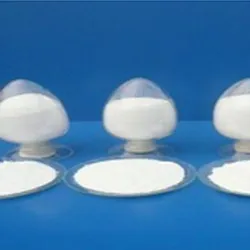
Exploring the Role of Monosodium Glutamate as a Common Food Additive
The Role of Monosodium Glutamate as a Food Additive
Monosodium glutamate, commonly known as MSG, has been a topic of debate and fascination since its introduction as a food additive. A sodium salt of glutamic acid, an amino acid that is naturally present in many foods, MSG is widely used to enhance the savory flavor of dishes. Its unique taste profile is often described as umami, a term derived from Japanese that translates to pleasant savory taste. With increasing globalization, the popularity of MSG has surged in various culinary applications around the world. This article explores the history, safety, culinary uses, and misconceptions surrounding monosodium glutamate.
Historical Background
MSG was first discovered in 1908 by Japanese chemist Kikunae Ikeda while he was researching the flavors of seaweed broth. Realizing that the broth's unique taste was due to a compound that could heighten flavor, he isolated glutamic acid and created MSG. It became commercially available in the United States in the 1940s and quickly gained traction in the food industry. MSG allows for a concentrated burst of flavor without requiring significant quantities of salt or other flavorings, making it a favorite among chefs and food manufacturers, especially in Asian cuisine.
Culinary Uses
Monosodium glutamate is commonly found in a variety of processed foods, including snack items, canned soups, frozen meals, and seasonings. It is particularly prevalent in foods labeled as “Chinese,” “Japanese,” or “Asian,” but it is not exclusive to these cuisines. Many recipes, especially in Western cooking, also utilize MSG to create complex flavor profiles. By amplifying the natural flavors of ingredients, MSG can significantly enhance the overall taste experience of a meal.
monosodium glutamate food additive

In addition to boosting umami flavors, MSG can reduce the need for sodium in food products. This has important implications for public health, as high sodium intake is linked to hypertension and cardiovascular diseases. Therefore, by using MSG to enhance flavor while simultaneously reducing sodium levels, food manufacturers can create healthier options without sacrificing taste.
Safety Concerns and Myths
Despite its widespread use, MSG has faced significant scrutiny and controversy. Concerns about its safety originated in the 1960s when a letter to a scientific journal reported adverse reactions after consuming Chinese food containing MSG, coining the term Chinese Restaurant Syndrome. Symptoms included headaches, flushing, and sweating, leading to widespread public mistrust of the additive.
However, extensive scientific research has since debunked many of these claims. Numerous studies conducted by reputable organizations, including the U.S. Food and Drug Administration (FDA) and the World Health Organization (WHO), have concluded that MSG is generally recognized as safe when consumed in normal amounts. In fact, the FDA has classified it as generally recognized as safe (GRAS). Nevertheless, a small percentage of people may be sensitive to MSG, experiencing mild symptoms upon consumption. For most individuals, however, MSG poses no health risks and is a useful tool for flavor enhancement.
Conclusion
Monosodium glutamate is a powerful ingredient that plays a significant role in the food industry, particularly in enhancing the flavors of various dishes. With a rich history and widespread culinary applications, MSG continues to be a subject of both enthusiasm and skepticism. While it is important for consumers to be informed about food additives, evidence suggests that MSG can be enjoyed safely and can contribute positively to dietary flavor profiles. As culinary practices and scientific knowledge evolve, it remains essential to differentiate between valid concerns and misconceptions regarding food additives like monosodium glutamate. Ultimately, when used judiciously, MSG can be a valuable ally in the kitchen, transforming ordinary dishes into extraordinary dining experiences.
-
Pure Sodium Dichloroisocyanurate Dihydrate | Powerful DisinfectantNewsAug.29,2025
-
Industrial Chemicals: Quality & Purity for Every IndustryNewsAug.28,2025
-
Nitrile Rubber Honoring Strict Production StandardsNewsAug.22,2025
-
Aspartame Ingredients Honoring Food Safety ValuesNewsAug.22,2025
-
Fertilizer for Balanced Plant NutritionNewsAug.22,2025
-
Cyanide Gold Processing with High Purity AdditivesNewsAug.22,2025
-
Formic Acid in Textile Dyeing ApplicationsNewsAug.22,2025
Hebei Tenger Chemical Technology Co., Ltd. focuses on the chemical industry and is committed to the export service of chemical raw materials.
-

view more DiethanolisopropanolamineIn the ever-growing field of chemical solutions, diethanolisopropanolamine (DEIPA) stands out as a versatile and important compound. Due to its unique chemical structure and properties, DEIPA is of interest to various industries including construction, personal care, and agriculture. -

view more TriisopropanolamineTriisopropanolamine (TIPA) alkanol amine substance, is a kind of alcohol amine compound with amino and alcohol hydroxyl, and because of its molecules contains both amino and hydroxyl. -

view more Tetramethyl Thiuram DisulfideTetramethyl thiuram disulfide, also known as TMTD, is a white to light-yellow powder with a distinct sulfur-like odor. It is soluble in organic solvents such as benzene, acetone, and ethyl acetate, making it highly versatile for use in different formulations. TMTD is known for its excellent vulcanization acceleration properties, which makes it a key ingredient in the production of rubber products. Additionally, it acts as an effective fungicide and bactericide, making it valuable in agricultural applications. Its high purity and stability ensure consistent performance, making it a preferred choice for manufacturers across various industries.





